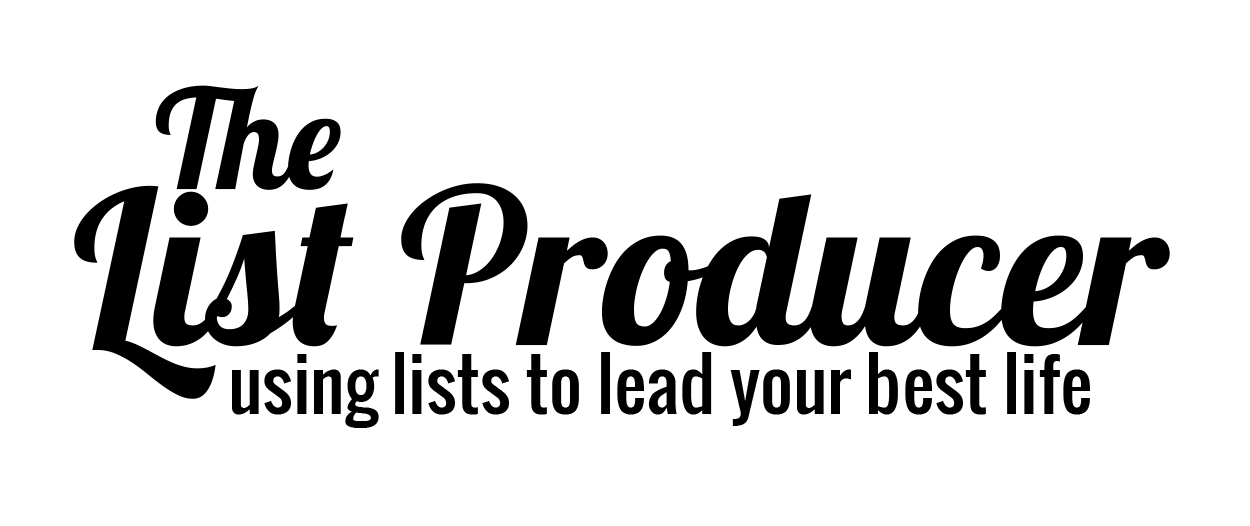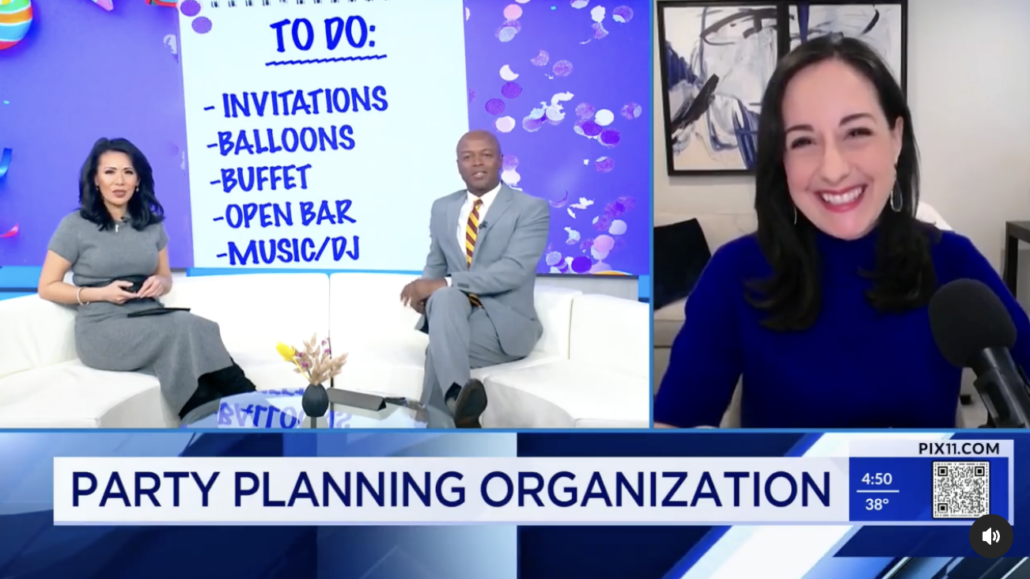Plan Your Party with Lists
___
BONUS FREEBIE: Want even more ways to stay organized, productive and less stressed? CLICK HERE to get access to my List-Making Starter Kit. It will boost your efficiency and get you back to doing more of the things you love.
___
If you’re planning a party or any kind of event, there are so many things you need to keep track of. Lists can be your secret weapon for tackling all the to-dos that accompany any great party. Some of these lists are no-brainers (guest lists, for instance) — and some you probably haven’t heard of before.
I shared some of my tips for using lists for event planning on PIX11 News in New York City — you can check out the whole interview here.
Before you start planning your next party, check out these guidelines for using lists to create a memorable event without the stress.
List-Making Reboot Experiment
___
BONUS FREEBIE: Want even more ways to stay organized, productive and less stressed? CLICK HERE to get access to my List-Making Starter Kit. It will boost your efficiency and get you back to doing more of the things you love.
___
I have made my to-do list the same way for quite a long time because it works really well for me.
I make a daily list every night before I leave my desk. I think about everything that needs to happen the next day, and I write down everything I have the time and the resources to do.
I’ve written two books on list making: Listful Thinking and Listful Living. And I even have a LinkedIn Learning Course outlining my methods.
Four Strategies to Prioritize Your Friendships
___
BONUS FREEBIE: Want even more ways to stay organized, productive and less stressed? CLICK HERE to get access to my List-Making Starter Kit. It will boost your efficiency and get you back to doing more of the things you love.
___
It happens to everyone — we get so caught up in the daily grind that our social lives often take a back seat. But making time for friends is essential to a healthy and joyful life.
Time with friends can contribute to a laundry list of health benefits. Friends improve your mood, lower the risk of depression and anxiety, and contribute to a longer, less stressful life. Collaborative friendships can even lead to a more productive day.
But adult life can make it so difficult to prioritize your friendships. Many factors, from family schedules to work commitments to geographical distance, put a wrench in sustaining these relationships. Time is a major factor — people just don’t seem to have enough of it!
However, that doesn’t mean you should throw in the towel and give up on your friends. Absolutely not! As a productivity expert, I know from experience that small changes and tweaks can have big impacts. And friendship is no exception. I appeared on PIX11 in New York City to talk about some unique ways to catch up with friends and invest in those relationships.







